iPhone X: 10 key moments leading up to the new handset
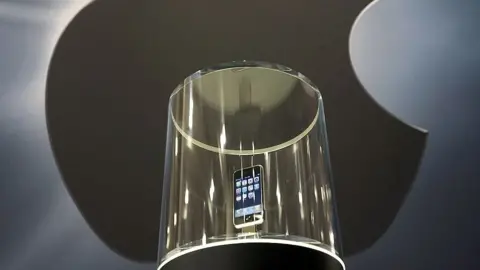 Getty Images
Getty ImagesApple's 10th anniversary iPhone launch is expected to be the biggest single upgrade the handset has seen since its launch.
A revamped design with an edge-to-edge display, facial recognition ID system and advanced augmented reality features is expected.
Several analysts have predicted the asking price for the top-end models will hit new heights too.
In a world in which the smartphone has become ubiquitous, it's easy to forget how much of a surprise Steve Jobs's unveiling of the original was a decade ago, and how divided opinion was about whether it was truly a game-changer.
To mark the occasion, we have picked 10 key moments from its past.

1. 2004: The birth of Project Purple
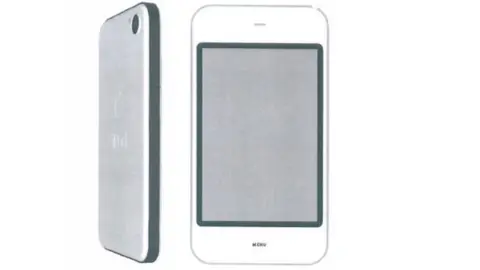 Apple
AppleAfter the success of first the iMac and then the iPod, Apple began developing a tablet as its next breakthrough product.
But around 2004, ex-iOS chief Scott Forstall recalls having a critical conversation over lunch with chief executive Steve Jobs.
"We were both using our phones and hated them," he told an audience earlier this year.
"We looked around, and like everyone around us has a phone, and everyone looks very angsty as they're using them.
"And Steve said, 'Do you think we can take that demo we are doing with the tablet and multi-touch and shrink it down to something… small enough to fit in your pocket?'"
This prompted Apple's engineers to create a basic contacts app that was constrained to a corner of the prototype tablet's display.
"The second [Steve Jobs] saw this demo, he knew this was it," Mr Forstall said. "There was no question. This was the way a phone had to behave."
As a legal filing would later reveal, by August 2005 Apple's industrial designers had already created a concept form factor - codenamed Purple - that is recognisable as the basis for the iPhone that followed.

2. July 2008: First iOS App Store apps released
 Erica Sadun
Erica SadunThere are now well over two million native apps available for the iPhone's iOS operating system, and most owners have several pages and folders worth of the programs.
But for a while, after the first iPhone launched, there weren't enough to fill even a single screen.
That's because third-party developers were initially limited to creating software that ran within the device's web browser. Steve Jobs reportedly believed policing a native app marketplace would be too complicated.
It wasn't until more than a year after the handset went on sale that the App Store was launched.
And history was made on 9 July when Apple made a handful of native apps live in advance of the marketplace opening its virtual doors.
Among them was Moo - a cow sound simulator - from Denver-based developer Erica Sadun.
"I had come from the jailbreak community [in which developers modify smartphones to add capabilities], which put a lot of pressure on Apple to have its own store," Ms Sadun said.
"The App Store completely revolutionised how independent developers could create businesses, monetise their product and present it to a community of people that was larger than anybody had ever dreamed of.
"It created a gold rush that I don't think we are ever going to see again."

3. September 2008: HTC Dream unveiled
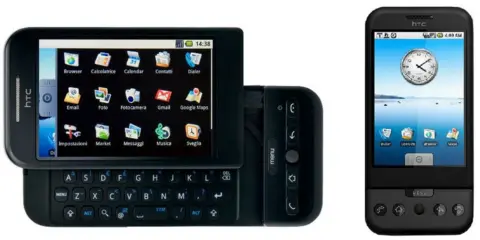 HTC
HTCIt sounds fanciful now, but once upon a time Google's chief executive was a member of Apple's board of directors.
Eric Schmidt did not resign from the post until 2009, but his days were numbered as soon as the first commercial Android phone was announced.
The HTC Dream offered features the iPhone still lacked, including copy and paste, Street View and multimedia messaging.
And while reviews were tepid - suggesting it was "best suited for early adopters" - they recognised the potential of a more open smartphone platform to iOS.
Curiously, the Dream was theoretically capable of supporting "multi-touch" gestures - recognising how many fingers were in contact with the screen - but the feature was disabled.
That was probably because Apple had patented the technology.
When HTC added the feature to a follow-up handset in 2010, Steve Jobs was infuriated.
"I'm going to destroy Android, because it's a stolen product," he subsequently told his biographer Walter Isaacson.
"I'm willing to go to thermonuclear war on this."

4. February 2010: Siri app released by SRI
 Getty Images
Getty ImagesThese days, Apple spends millions making adverts starring Siri and Dwayne "The Rock" Johnson, among other celebrity co-stars.
But when the virtual assistant was first released on iOS, it was a relatively low-profile app from a fairly obscure Californian research institute, which had been part-funded by the Pentagon.
Its business model was to charge restaurants and event promoters a fee for any voice-controlled bookings made for their businesses, and the plan was to release follow-up versions for Android and Blackberry.
But that changed two months after its launch, when Apple bought the technology, reportedly for more than $200m (£150m).
The app remained live on the App Store until October 2011, at which point an upgraded version became an exclusive feature for the newly launched iPhone 4S.

5. June 2010: The first selfie iPhone
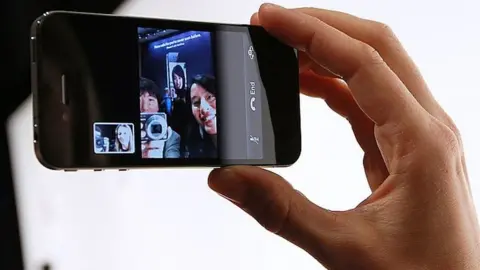 Getty Images
Getty ImagesWhen the iPhone 4 was released, reviews highlighting its addition of a front camera focused on its use for video calls rather than self-portraits.
Perhaps that was understandable. Although the word "selfie" had already been coined, it had yet to become commonplace.
And while the iPhone 4 was not the first handset to feature a camera on both its sides - Sony Ericsson did so in 2003 - it can claim to have been a driving force in the rise of selfie culture.
"The iPhone 4 was important as you had a device that was very easy to use, a big teen demographic with access to it, and an explosion of mobile apps," said Charles Arthur, author of Digital Wars.
"It's a classic example of unintended consequences.
"Now, the selfie has taken over from the autograph.
"Watch people at any public event where they are meeting stars, and they're always trying to get a selfie with them."

6. October 2011: The death of Steve Jobs
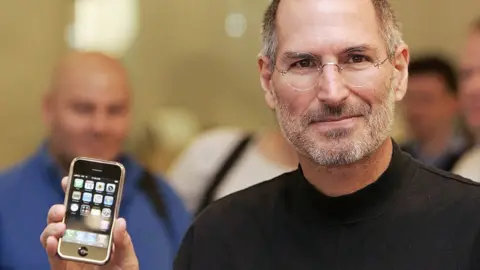 Getty Images
Getty ImagesWhen Tim Cook - rather than Steve Jobs - unveiled the 4S on 4 October 2011, he faced criticism for his performance. The BBC even accused him of appearing "dull".
What wasn't apparent at the time was that Mr Cook must have been aware that his mentor and friend Steve Jobs was close to death.
He died the next day.
It is likely that Apple would have collapsed had Mr Jobs not returned in 1997 to the company he had co-founded, meaning there would never have been an iPhone.
Or had he not subsequently stayed at Apple, it's possible the company's engineers might have pursued a rival mobile phone design based around the iPod's click wheel.
Certainly, since his death, Apple has yet to launch a product that has come anywhere close to achieving the iPhone's level of success, and some question whether it ever will.
Mr Jobs's last public appearance was at Cupertino City Council in June 2011, where he sought permission for Apple to build a new headquarters.
The new iPhone will be the first product to be launched at the new campus, within an event space called the Steve Jobs Theater.

7. April 2012: Facebook's $1bn takeover of Instagram
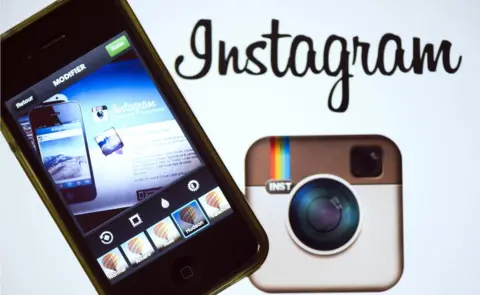 Getty Images
Getty ImagesIf ever proof were needed of the disruptive economic impact of the iPhone, the takeover of Instagram provided it.
The app had been in existence only 18 months when the deal was announced. It had just 13 employees and had been an iOS-exclusive until the week before the revelation.
Its takeover provided a bonanza to both Instagram's investors as well as to other smartphone-related start-ups seeking venture capital cash.
At the time, many thought Facebook had wildly overpaid. Now, as Instagram sucks in ever more advertising dollars while offline media's funding struggles worsen, it seems like a bargain.
Other apps that debuted on the iPhone - including Uber, Deliveroo and Airbnb - have shaken up industry in other ways.
And by one estimate, the total value of the global app economy - including software sales, advertising and mobile commerce - was $1.3tn (£993bn) for last year.

8. July 2012: Apple buys AuthenTec
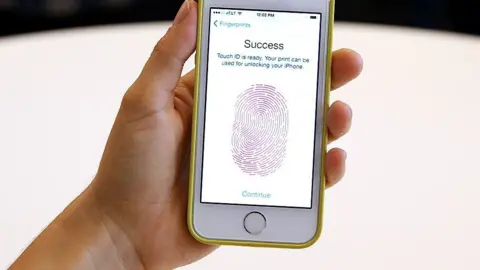 Getty Images
Getty ImagesApple's $356m takeover of a fingerprint sensor chip-maker in 2012 caused a particular problem for Samsung.
The South Korean company was already using the Florida-based company's components in its laptops and had just announced a deal to add another of its security products to its Android phones.
But while the idea of frustrating its arch-rival probably had some appeal, the biggest benefit to Apple was the ability to launch its Touch ID system in 2013's iPhone 5S.
As reviews noted, previous attempts to introduce fingerprint scanning to phones had proven "unreliable, often causing more aggravation than they're worth" but the new system worked "pretty much flawlessly".
Initially, the feature was limited to being used to unlock the phone and make digital purchases from Apple.
But it later made it possible for the company to introduce Apple Pay and add security to third-party apps without requiring the hassle of typing in a password each time.
One side-effect of the sensor's success is it may have prolonged the life of a physical home button on the iPhone.
If rumours are to be believed, Apple has struggled to replace it with a part that could be hidden beneath the screen and may be about to replace it altogether with facial recognition scans on the iPhone X.

9. August 2013: Steve Ballmer says he is stepping down as Microsoft chief
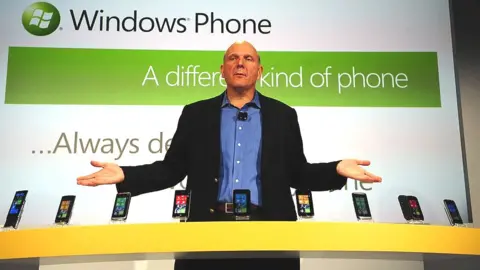 Getty Images
Getty ImagesIn 1997, Microsoft threw Apple a lifeline by taking a $150m stake in the failing company.
Apple returned the favour by launching a product that Microsoft first failed to properly understand and then struggled to match.
Chief executive Steve Ballmer famously laughed at the iPhone's prospects after he first heard about it.
"That is the most expensive phone in the world, and it doesn't appeal to business customers because it doesn't have a keyboard," he said in 2007.
Six years later, he announced the takeover of Nokia's phone business for 5.4bn euros ($6.5bn; £5bn) in an attempt to catch up, only for the sum to be written off in 2015 after he had departed and his successor finally accepted Windows Phone was a flop.
The irony is that if Microsoft's stake in Apple had not been sold off under Mr Ballmer, it would now be worth more than $40bn and he might have shared in its success.
"Like so many other people, Steve Ballmer completely underestimated the impact of the iPhone," said Ben Wood, from the CCS Insight consultancy.
"His arrogant dismissal has certainly come back to haunt him."

10. July 2016: Pokemon Go released
Pokemon Go fever is now well past its peak, and the app more likely to make headlines for botched events than rare monster sightings.
But its legacy has been to prove that augmented reality (AR) apps - in which graphics are mixed with real-world views - can have mass appeal.
AR actually dates back to 2009 on the iPhone, when a French developer created an app that shows nearby shops and other points of interest in Paris.
But it's set to come of age with the imminent release of iOS 11, which includes ARKit - software that makes it easier for developers to anchor graphics to the world beyond and take account of its lighting conditions.
Several demos released in advance have looked impressive, not least a version of PacMan where you walk through the maze.
The question remains whether users will be satisfied experiencing the action on their iPhones, or whether Apple will feel compelled to release an accompanying headset to let them go hands-free.
